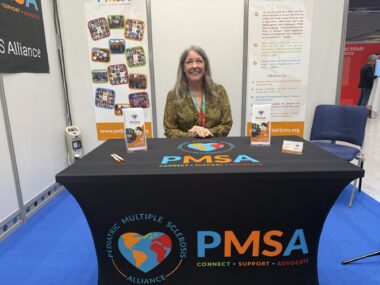#ECTRIMS2022 – Relapse-free Progression Evident in Pediatric MS
DMT use seen to lower PIRA risk in large study of adult- and pediatric-onset MS
Written by |

Disability progression in the absence of relapses is less common in children and adolescents with multiple sclerosis (MS) than among people with adult-onset disease, according to data covering more than 5,000 patients with relapsing forms of MS.
Nevertheless, this form of progression — called progression independent of relapse activity, or PIRA — still accounted for nearly half of confirmed disability worsening events in pediatric-onset MS (POMS) patients, even at early stages of the disease.
Longer exposure to disease-modifying therapies (DMTs) was associated with a significantly lower risk of PIRA in both pediatric- and adult-onset patient groups. But a greater effect was seen in the POMS group, suggesting that early use of DMT may help prevent PIRA, “potentially slowing down the transition to the progressive phase and reducing the long-term burden of the disease,” Emilio Portaccio, MD, with the University of Florence, said in an oral presentation.
‘Substantial’ portion of progression events in pediatric MS not tied to relapse
The findings, “Progression independent of relapse activity can occur in pediatric-onset multiple sclerosis and can be prevented by disease modifying drugs,” were presented by Portaccio at the 38th Congress of the European Committee for Treatment and Research in Multiple Sclerosis (ECTRIMS), held Oct. 26–28 both virtually and in Amsterdam, the Netherlands.
In relapsing forms of MS, disability accumulation is thought to result from neuroinflammatory events that lead to relapses, or times when existing symptoms rapidly worsen or new ones suddenly appear. The incomplete recovery from a relapse is called relapse-associated worsening, or RAW.
However, increasing evidence points to PIRA as an underestimated contributing factor in relapsing MS. Previous studies suggested that PIRA is more frequent among older patients and those with longer disease duration.
Notably, little is known about the role of PIRA in POMS, a rare form of the neurological disease that is associated with higher relapse rates and a faster progression than the more common, adult-onset form of MS (AOMS).
Portaccio and colleagues in Italy evaluated the contribution of PIRA and RAW to six-month confirmed disability accumulation in pediatric-onset versus adult-onset MS patients. They also investigated potential predictors of both forms of disability progression and whether DMTs reduced these events in these two patients groups.
Their analysis included 5,169 people with clinically isolated syndrome or relapsing-remitting MS (RRMS) who were assessed within one year from disease onset and followed for at least five years within the Italian MS Registry.
The AOMS group made up 93.8% of the patient sample, and had a mean age of 32.9 at registry entry; the 323 (6.2%) children and adolescents with POMS had a mean age of 15.8 years. Patients were followed for a mean of 11.5 years.
Six-month confirmed disability accumulation was classified as an increase in the expanded disability status scale (EDSS) score, in which higher scores indicate worse disability.
Longer use of disease-modifying therapies linked to significantly lower risk
Disability accumulation was considered RAW if it occurred between the 30 days before and the 90 days after a relapse, while that reported outside that period was classified as PIRA.
Results showed that, over the entire follow-up period, a similar proportion of POMS and AOMS patients experienced no (58.5% vs. 54.3%), one (26.6% vs. 27.9%), and two or more confirmed disability events (14.9% vs. 17.8%).
However, PIRA was significantly less frequent in children with MS (22.6%) than among patients with adult-onset disease (33.8%). Thus, relapse-independent progression accounted for a significantly smaller proportion of disability worsening events in POMS than in AOMS patients (47.8% vs. 66.7%).
Notably, similar results were obtained when looking at only the first five years of follow-up, with 43.1% of events in the POMS group and 55.2% in the AOMS group being independent of relapses.
While “PIRA is less frequent in POMS than in AOMS,” the researchers wrote, “a substantial proportion of POMS patients can experience PIRA events, even during the early phase of the disease.”
Further analyses indicated that POMS was associated with a 33.5% lower risk of PIRA. Longer disease duration was significantly associated with PIRA in both groups, increasing the risk of relapse-independent progression by about threefold in POMS and by 1.5 times in AOMS.
In terms of RAW, younger age was significantly associated with a slightly lower risk of relapse-associated progression in both patient groups. Among POMS patients, female sex and longer disease duration were both significant predictors of RAW, increasing the risk by about two times.
Notably, longer exposure to DMTs significantly reduced the risk of PIRA in both groups, and this effect “was particularly evident in POMS,” Portaccio said.
This real-world study of early relapsing MS patients confirmed that age is “one of the main determinants of disability accumulation [type],” Portaccio said, with older age being more frequently associated with PIRA.
“However, even in POMS, PIRA accounted for approximately one half of all [disability accumulation events], suggesting that the disease could be considered as a continuum in which relapse dependent and independent disability worsening are [intertwined] since its earliest phase,” the researchers wrote.
Note: The Multiple Sclerosis News Today team is providing in-depth coverage of the ECTRIMS Forum 2022 Oct. 26–28. Go here to see the latest stories from the conference.






